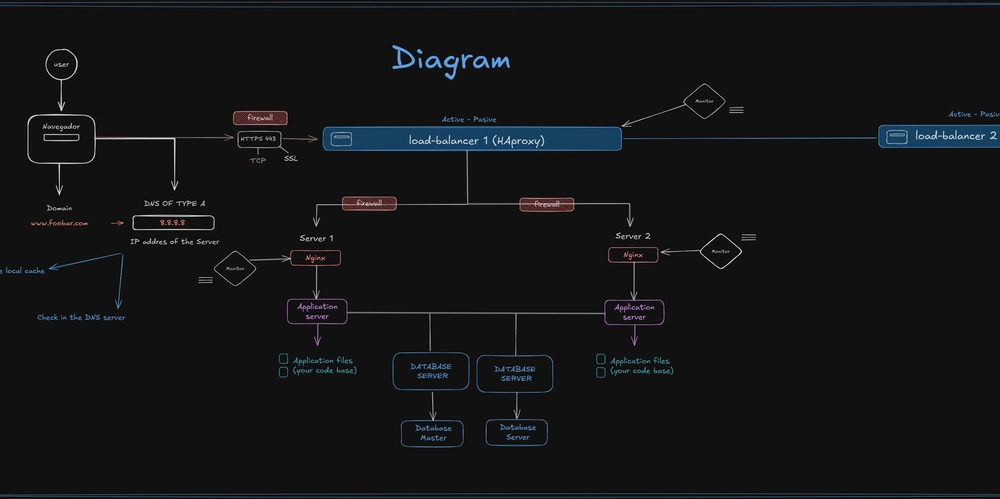Understanding Database Indexes: A Library Analogy
Imagine searching for a book on databases in a massive library with thousands of books. Without organization, finding that book could take hours. This is where indexes come in, both in libraries and databases. In this post, we’ll use a library analogy to explain why indexes are essential for efficient data retrieval in relational databases, focusing on books about databases. Scene 0: No Organization Picture a library where thousands of books are stacked randomly—no labeled sections, no catalog. To find a book like Database Internals, you’d need to check the title of nearly every book. This is slow and inefficient, much like searching a database without an index. In a relational database, the library is the database, each book is a row in a table, and the table might look like this: Book Title Database Internals SQL Performance Tuning NoSQL Databases: A Practical Guideाण Quantum Circuits Regenerative Medicine Without any structure, the database must perform a full table scan, checking every row to find a specific book. This is computationally expensive, especially for large tables. Scene 1: Basic Organization Now, the library has labeled sections, such as Engineering, Medical, and Psychology. The librarian also maintains a catalog (an index) that lists books by their Stream, a category like Engineering. When you ask for database books, the librarian checks the catalog and directs you to the Engineering section, narrowing your search to a smaller subset of books. In a database, this is like adding a column to categorize rows and creating an index on that column. Here’s how the table might look: Book Title Stream Section Database Internals Engineering A SQL Performance Tuning Engineering A NoSQL Databases: A Practical Guide Engineering A Quantum Circuits Engineering A Regenerative Medicine Medical B The database creates an index on the Stream column—a separate data structure (often a B-tree) that maps Stream values to row locations. Querying for Stream = 'Engineering' is now much faster because the database uses the index to skip irrelevant rows, avoiding a full table scan. Scene 2: Full Indexing The library takes organization further. The librarian maintains a detailed catalog that pinpoints each book’s exact location: section, rack, and position. When you ask, “Where’s Database Internals by Author?”, the librarian replies, “Section A, Rack 5, Position 2.” You walk straight to the book, saving time. In a database, this is like creating indexes on multiple columns, such as Book Title or Stream. The table might include location details for clarity, but the index is a separate structure: Book Title Stream Section Rack Position Database Internals Engineering A 5 2 SQL Performance Tuning Engineering A 4 1 NoSQL Databases: A Practical Guide Engineering A 6 3 Quantum Circuits Engineering A 3 4 Regenerative Medicine Medical B 2 5 An index on Book Title allows the database to quickly locate a specific row, like finding Database Internals in milliseconds. This is the power of indexing: transforming a slow search across thousands of rows into a fast, targeted lookup. Note: The Section, Rack, and Position columns are for illustration. In a real database, the index itself stores pointers to rows, not physical locations. How Indexes Work in Databases A database index is a data structure that speeds up queries by mapping column values to row locations. Most indexes use a B-tree, which organizes data for rapid lookups, similar to a phonebook. For example, an index on Book Title lets the database find SQL Performance Tuning without scanning the entire table. Common index types include: Primary Key Index: Ensures unique values (e.g., a book’s ISBN). Unique Index: Enforces uniqueness (e.g., a book’s title in a simplified system). Composite Index: Indexes multiple columns (e.g., Stream and Book Title) for complex queries. However, indexes have trade-offs: Faster Reads: Queries run faster because the database uses the index. Slower Writes: Inserting or updating rows requires updating the index, adding overhead. Storage Overhead: Indexes consume additional disk space. What Happens Without an Index? Without an index, the database performs a full table scan, checking every row for a match. Imagine a table with 1 million customer records. Querying for a customer by email (e.g., email = 'jane@example.com') could take seconds or minutes. With an index on the email column, the database locates the row in milliseconds, vastly improving performance. For example, in our library table, searching for Database Internals without an index requires checking every row. An index on Book Title makes the search near-instantaneous. Conclusion Indexes are the backbone of efficient database queries, acting like a library’s catalog to transform slow searches into fast lookups. By organizing data in struct

Imagine searching for a book on databases in a massive library with thousands of books. Without organization, finding that book could take hours. This is where indexes come in, both in libraries and databases. In this post, we’ll use a library analogy to explain why indexes are essential for efficient data retrieval in relational databases, focusing on books about databases.
Scene 0: No Organization
Picture a library where thousands of books are stacked randomly—no labeled sections, no catalog. To find a book like Database Internals, you’d need to check the title of nearly every book. This is slow and inefficient, much like searching a database without an index.
In a relational database, the library is the database, each book is a row in a table, and the table might look like this:
| Book Title |
|---|
| Database Internals |
| SQL Performance Tuning |
| NoSQL Databases: A Practical Guideाण |
| Quantum Circuits |
| Regenerative Medicine |
Without any structure, the database must perform a full table scan, checking every row to find a specific book. This is computationally expensive, especially for large tables.
Scene 1: Basic Organization
Now, the library has labeled sections, such as Engineering, Medical, and Psychology. The librarian also maintains a catalog (an index) that lists books by their Stream, a category like Engineering. When you ask for database books, the librarian checks the catalog and directs you to the Engineering section, narrowing your search to a smaller subset of books.
In a database, this is like adding a column to categorize rows and creating an index on that column. Here’s how the table might look:
| Book Title | Stream | Section |
|---|---|---|
| Database Internals | Engineering | A |
| SQL Performance Tuning | Engineering | A |
| NoSQL Databases: A Practical Guide | Engineering | A |
| Quantum Circuits | Engineering | A |
| Regenerative Medicine | Medical | B |
The database creates an index on the Stream column—a separate data structure (often a B-tree) that maps Stream values to row locations. Querying for Stream = 'Engineering' is now much faster because the database uses the index to skip irrelevant rows, avoiding a full table scan.
Scene 2: Full Indexing
The library takes organization further. The librarian maintains a detailed catalog that pinpoints each book’s exact location: section, rack, and position. When you ask, “Where’s Database Internals by Author?”, the librarian replies, “Section A, Rack 5, Position 2.” You walk straight to the book, saving time.
In a database, this is like creating indexes on multiple columns, such as Book Title or Stream. The table might include location details for clarity, but the index is a separate structure:
| Book Title | Stream | Section | Rack | Position |
|---|---|---|---|---|
| Database Internals | Engineering | A | 5 | 2 |
| SQL Performance Tuning | Engineering | A | 4 | 1 |
| NoSQL Databases: A Practical Guide | Engineering | A | 6 | 3 |
| Quantum Circuits | Engineering | A | 3 | 4 |
| Regenerative Medicine | Medical | B | 2 | 5 |
An index on Book Title allows the database to quickly locate a specific row, like finding Database Internals in milliseconds. This is the power of indexing: transforming a slow search across thousands of rows into a fast, targeted lookup.
Note: The Section, Rack, and Position columns are for illustration. In a real database, the index itself stores pointers to rows, not physical locations.
How Indexes Work in Databases
A database index is a data structure that speeds up queries by mapping column values to row locations. Most indexes use a B-tree, which organizes data for rapid lookups, similar to a phonebook. For example, an index on Book Title lets the database find SQL Performance Tuning without scanning the entire table.
Common index types include:
- Primary Key Index: Ensures unique values (e.g., a book’s ISBN).
- Unique Index: Enforces uniqueness (e.g., a book’s title in a simplified system).
-
Composite Index: Indexes multiple columns (e.g.,
StreamandBook Title) for complex queries.
However, indexes have trade-offs:
- Faster Reads: Queries run faster because the database uses the index.
- Slower Writes: Inserting or updating rows requires updating the index, adding overhead.
- Storage Overhead: Indexes consume additional disk space.
What Happens Without an Index?
Without an index, the database performs a full table scan, checking every row for a match. Imagine a table with 1 million customer records. Querying for a customer by email (e.g., email = 'jane@example.com') could take seconds or minutes. With an index on the email column, the database locates the row in milliseconds, vastly improving performance.
For example, in our library table, searching for Database Internals without an index requires checking every row. An index on Book Title makes the search near-instantaneous.
Conclusion
Indexes are the backbone of efficient database queries, acting like a library’s catalog to transform slow searches into fast lookups. By organizing data in structures like B-trees, indexes save time and resources, especially for large datasets. To dive deeper, explore index types or query optimization in resources like Database System Concepts by Silberschatz et al. or online courses on platforms like Coursera.
Next time you query a database, think of the library catalog guiding you to the perfect book—database indexes work the same magic!












































































































































































![[The AI Show Episode 146]: Rise of “AI-First” Companies, AI Job Disruption, GPT-4o Update Gets Rolled Back, How Big Consulting Firms Use AI, and Meta AI App](https://www.marketingaiinstitute.com/hubfs/ep%20146%20cover.png)



























































































































![[FREE EBOOKS] Modern Generative AI with ChatGPT and OpenAI Models, Offensive Security Using Python & Four More Best Selling Titles](https://www.javacodegeeks.com/wp-content/uploads/2012/12/jcg-logo.jpg)




![How to make Developer Friends When You Don't Live in Silicon Valley, with Iraqi Engineer Code;Life [Podcast #172]](https://cdn.hashnode.com/res/hashnode/image/upload/v1747360508340/f07040cd-3eeb-443c-b4fb-370f6a4a14da.png?#)








































































































































![[Virtual Event] Strategic Security for the Modern Enterprise](https://eu-images.contentstack.com/v3/assets/blt6d90778a997de1cd/blt55e4e7e277520090/653a745a0e92cc040a3e9d7e/Dark_Reading_Logo_VirtualEvent_4C.png?width=1280&auto=webp&quality=80&disable=upscale#)













































































-xl-(1)-xl-xl.jpg)


























![iPhone 17 Air Could Get a Boost From TDK's New Silicon Battery Tech [Report]](https://www.iclarified.com/images/news/97344/97344/97344-640.jpg)
![Vision Pro Owners Say They Regret $3,500 Purchase [WSJ]](https://www.iclarified.com/images/news/97347/97347/97347-640.jpg)
![Apple Showcases 'Magnifier on Mac' and 'Music Haptics' Accessibility Features [Video]](https://www.iclarified.com/images/news/97343/97343/97343-640.jpg)
![Sony WH-1000XM6 Unveiled With Smarter Noise Canceling and Studio-Tuned Sound [Video]](https://www.iclarified.com/images/news/97341/97341/97341-640.jpg)





































































